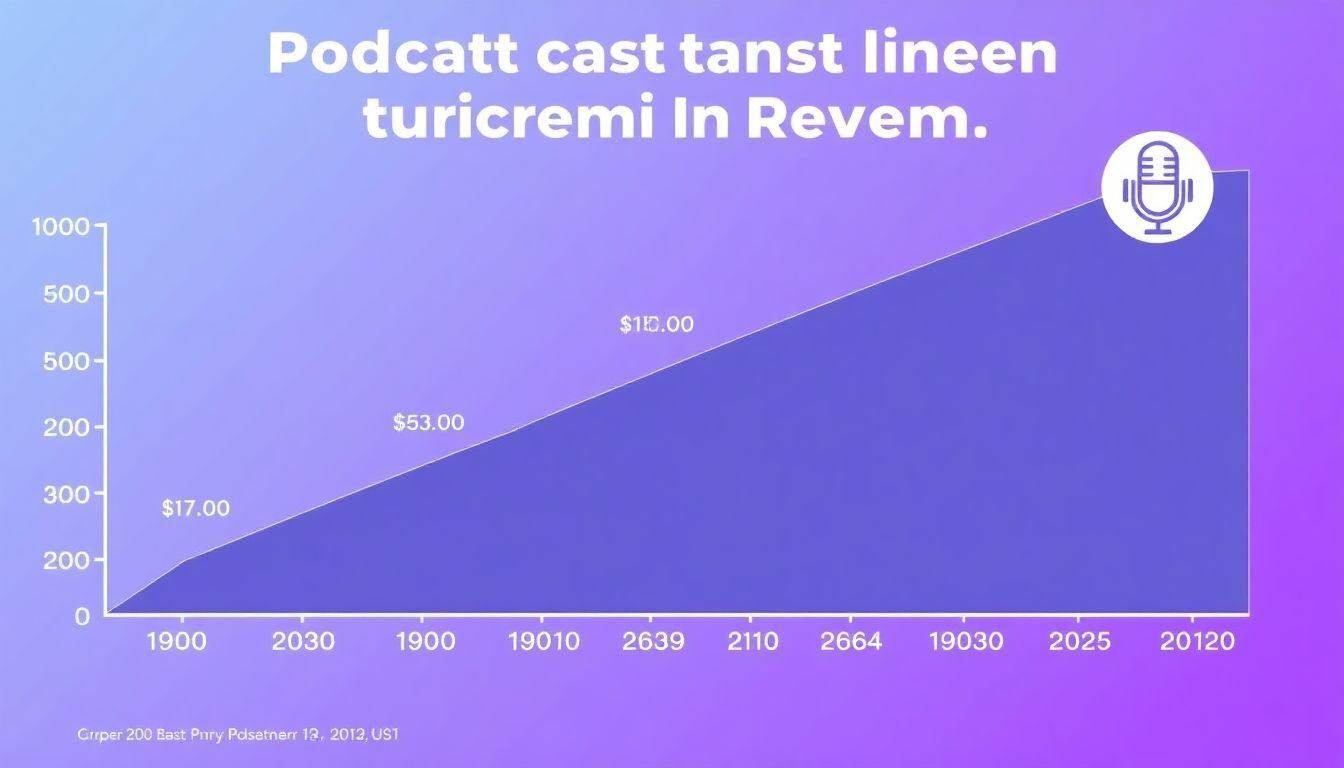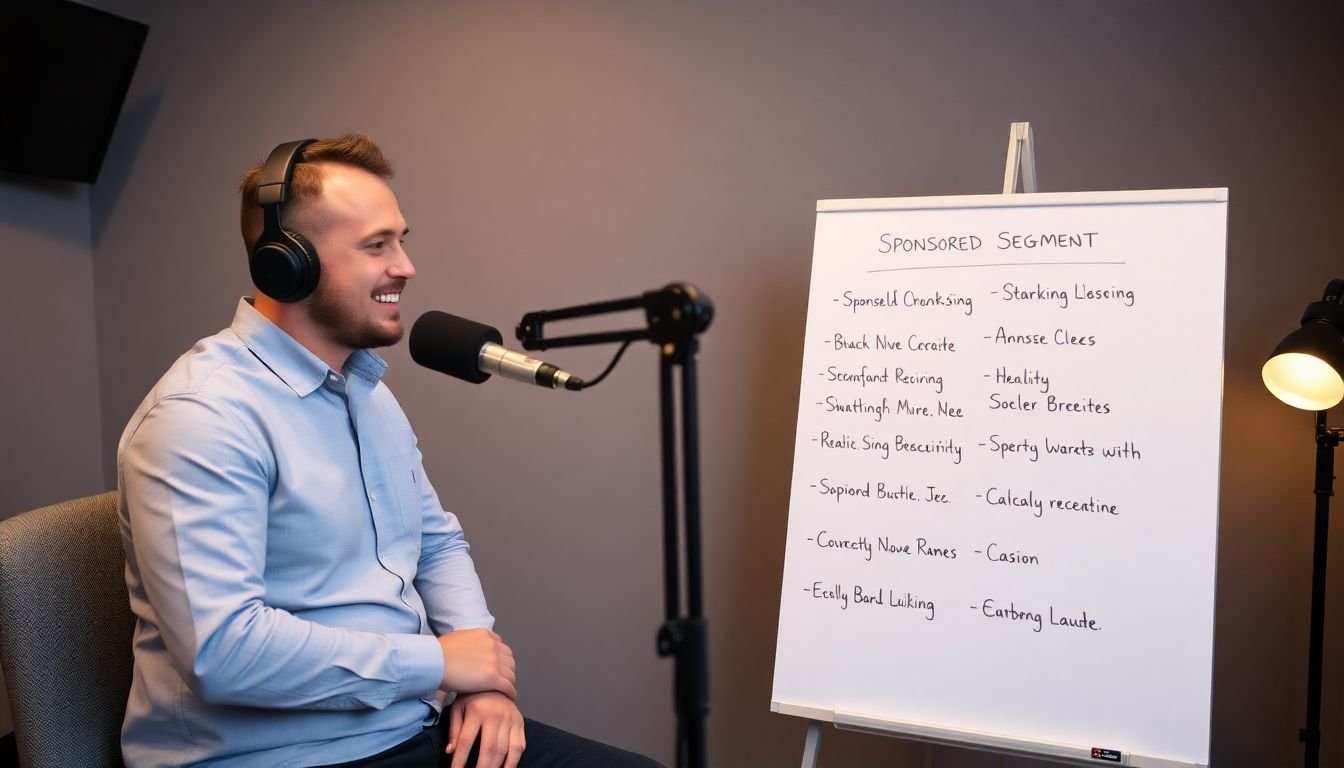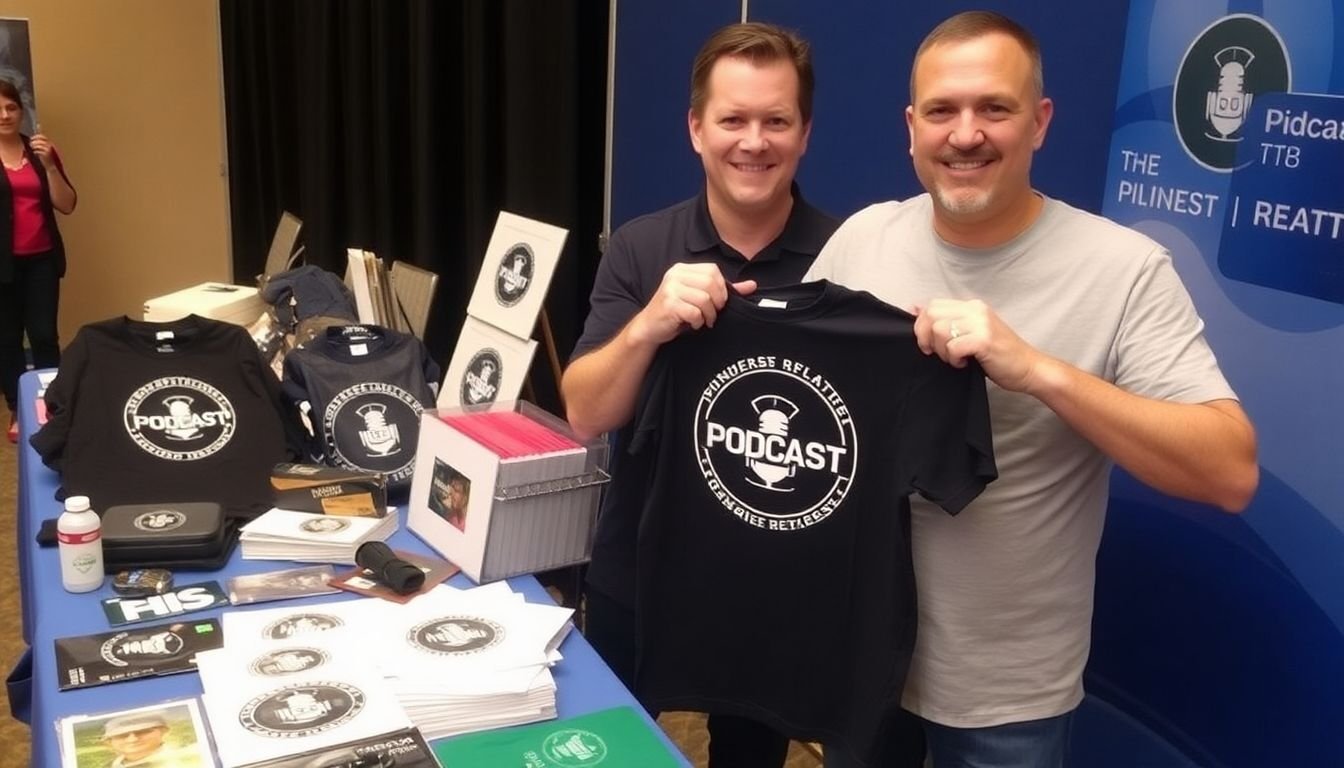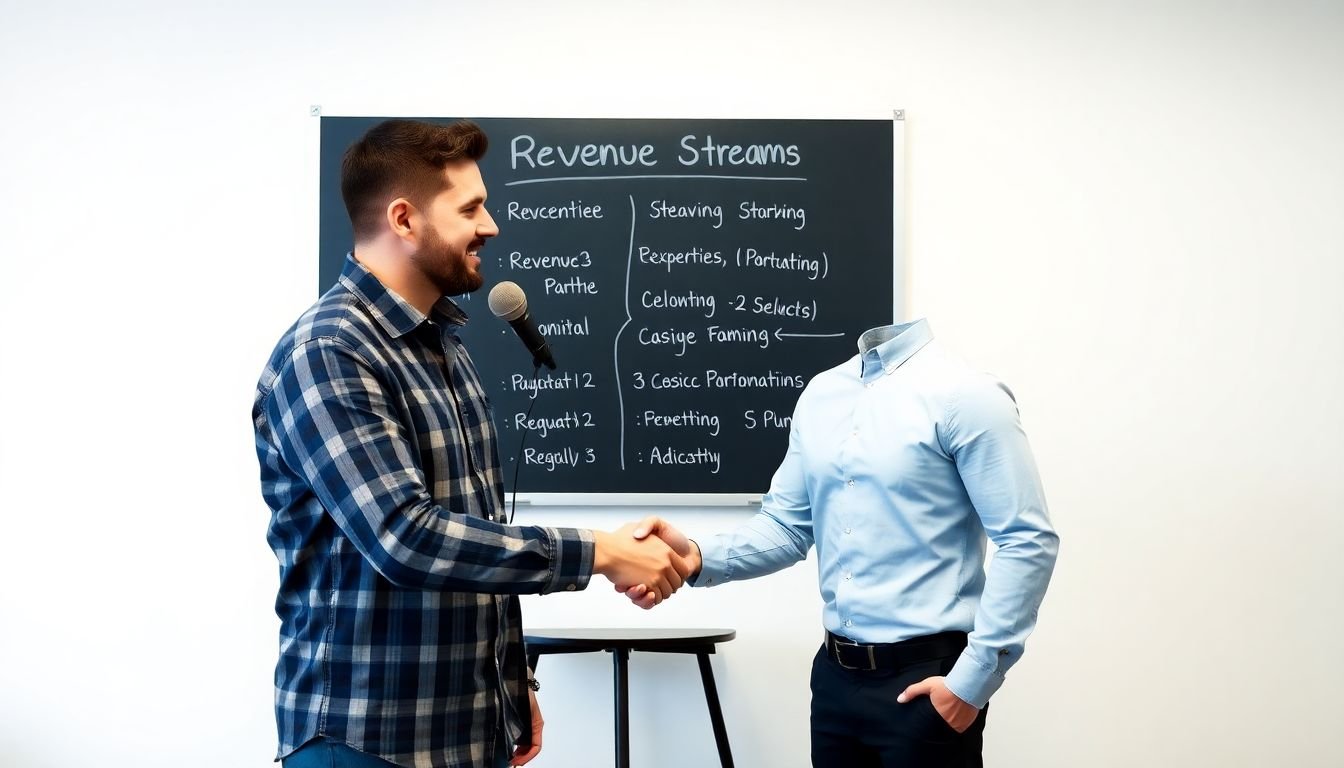
Table of Contents
In the dynamic world of podcasting, one question often looms large in the minds of creators: ‘How can I turn my passion for podcasting into a sustainable business?’ The answer lies in understanding and strategically employing various podcast monetization models. This article, ‘How to Monetize Your Podcast: Different Revenue Models Explained’, is your comprehensive guide to transforming your audio content into a thriving content business. Let’s dive in!
Agree with us when we say that podcasting has evolved from a niche hobby to a multimillion-dollar industry. According to a report by the Interactive Advertising Bureau (IAB) and PwC, podcast advertising revenues in the U.S. reached $878 million in 2020, a 14% increase from the previous year. Yet, with this growth comes a pressing need for podcasters to understand how to tap into this revenue stream. This is where our promise comes in
- by the end of this article, you’ll have a clear understanding of various revenue models, their pros, cons, and how to implement them in your podcast journey.
Before we preview the revenue models, let’s consider a scenario. Imagine you’ve spent countless hours researching, recording, and editing your podcast. You’ve built an audience, and they love your content. But the bills are piling up, and you’re wondering, ‘How can I keep creating quality content without breaking the bank?’ This is where monetization comes into play. It’s not just about making money; it’s about creating a sustainable podcast business that allows you to continue producing content your audience loves.
In this article, we’ll explore a variety of podcast monetization strategies, from advertising and sponsorships to listener support and merchandise sales. We’ll delve into each model, providing real-life examples and step-by-step guides on how to implement them. We’ll also discuss the importance of diversifying your revenue streams and building a strong relationship with your audience. So, whether you’re a seasoned podcaster looking to expand your income or a newcomer eager to plan for the future, this article is your roadmap to turning your passion into a profitable podcast business. Let’s get started!
Diversify Your Income with These Podcast Monetization Strategies
In the dynamic world of podcasting, diversifying your income streams is not just a smart move, but a necessity. While ad revenue and sponsorships are traditional income sources, they’re not the only game in town. Imagine you’re a chef in a bustling kitchen, and your podcast is the tantalizing dish you’re cooking up. Now, you wouldn’t rely on just one ingredient to make your dish a success, would you? Similarly, you shouldn’t rely on just one income stream to make your podcast a success. Let’s explore some innovative podcast monetization strategies that will help you create a rich, diverse, and delicious income portfolio. Think of it as adding a variety of spices to your podcasting dish
- each one enhancing the flavor and making your podcast even more irresistible to your listeners. So, are you ready to roll up your sleeves and start cooking up some extra income? Let’s dive in!

Understanding Podcast Monetization
Podcast monetization, the process of generating income from a podcast, is a critical aspect of turning a passion for audio storytelling into a sustainable business. Understanding and implementing effective monetization strategies can transform a podcast from a hobby into a thriving content venture.
Monetization is not just about generating revenue; it’s also about building a relationship with your audience. By offering value through your content and providing ways for listeners to support you, you foster a sense of community and engagement. This can lead to increased listener loyalty and growth in your audience.
There are several revenue models that podcasters can consider, each with its own significance in building a sustainable content business.
- Sponsorships: This is one of the most common forms of podcast monetization. Sponsors pay podcasters to mention their products or services during the show. The significance lies in its potential to generate substantial income, especially for popular podcasts with large, engaged audiences.
- Affiliate Marketing: Here, podcasters earn a commission for promoting other companies’ products. The significance is that it allows podcasters to monetize their content without needing a large audience, as long as they have a loyal and engaged listener base.
- Premium Content: Charging for exclusive content or perks can be a significant revenue stream. This could be in the form of a subscription model, where listeners pay for ad-free episodes or bonus content, or a pay-per-download model.
- Crowdfunding: Platforms like Patreon allow listeners to contribute to the podcast directly. This model is significant as it allows podcasters to build a direct relationship with their audience and receive support for their work.
- Merchandising: Selling branded merchandise can be a passive income stream. The significance lies in its ability to create a sense of community and belonging among listeners.
Each of these models has its own pros and cons, and many podcasters find success by combining several of these strategies. The key is to understand your audience, their preferences, and their willingness to support your content, and to choose the monetization strategies that align with these factors.

Building a Loyal Audience: The Foundation of Monetization
Building a loyal audience is the cornerstone of any successful podcast’s journey towards monetization. It’s akin to cultivating a garden; you can’t expect to reap a bountiful harvest without first planting seeds and nurturing them to growth. Similarly, a podcast without a dedicated listener base is like a tree falling in an empty forest
- it makes no sound, and it certainly doesn’t generate income.
The first step in this process is consistency. Just as a gardener must water their plants regularly, a podcaster must feed their audience with fresh content on a consistent schedule. This could be weekly, bi-weekly, or even daily, depending on your topic and resources. Consistency breeds familiarity, and familiarity fosters loyalty.
Another strategy is to leverage the power of guest appearances. Inviting industry experts or influential figures as guests not only adds value to your content but also exposes your podcast to their established audiences. It’s a win-win situation; you gain new listeners, and your guests gain exposure to your audience. Plus, it adds variety to your content, keeping your regular listeners engaged.
Listener interaction is also key. Engaging with your audience makes them feel valued and invested in your podcast. This can be done through Q&A sessions, listener mailbags, or even live shows. Social media platforms can also be used to build a community around your podcast, where listeners can interact with each other and with you. Remember, every interaction is an opportunity to strengthen the bond between your audience and your podcast.
Once you’ve built a loyal audience, monetization becomes a natural next step. Sponsors are more likely to invest in a podcast with a proven track record of dedicated listeners. Similarly, listeners are more likely to support a podcast they feel connected to, through subscriptions, merchandise, or donations. But remember, the key to successful monetization is not to rush it. A loyal audience is the foundation upon which a sustainable, profitable podcast is built.

Direct Listener Support: Premium Content and Subscription Models
In the dynamic world of podcasting, monetization strategies have evolved to include direct listener support, with premium content and subscription models taking center stage. Platforms such as Patreon, Ko-fi, and Buy Me a Coffee have emerged as powerful tools for podcasters to engage with their audience and generate revenue simultaneously.
Patreon, for instance, allows listeners to become ‘patrons’ by pledging a monthly amount in exchange for exclusive content or perks. This could range from early access to episodes, behind-the-scenes content, or even interactive Q&A sessions. By integrating Patreon into a podcasting strategy, creators can foster a sense of community and directly involve listeners in their content creation process.
Ko-fi and Buy Me a Coffee, on the other hand, operate on a one-time donation basis. Listeners can show their appreciation for an episode or a series by making a small contribution. These platforms also offer creators the option to set up ‘goal-based’ funding, where listeners can contribute towards specific projects or milestones.
To integrate these platforms into a podcasting strategy, consider the following steps:
- Identify what exclusive content or perks you can offer to your listeners.
- Set up an account on the chosen platform(s) and link it to your podcast’s website or social media profiles.
- Promote your support platforms regularly during your podcast episodes and on your social media channels.
- Engage with your supporters by acknowledging their contributions and involving them in your content creation process.
By doing so, you’re not only diversifying your revenue streams but also building a stronger, more engaged listener community.

Sponsored Segments and Brand Partnerships
In the dynamic world of podcasting, sponsored segments and brand partnerships have emerged as a significant revenue stream, transforming the way content creators monetize their work. By strategically integrating brand messages into your show, you can generate income while providing value to both your audience and the sponsor.
Securing sponsorships involves several steps. First, identify potential sponsors whose products or services align with your show’s niche and values. Reach out to them with a compelling pitch that highlights your audience demographics, download numbers, and unique selling points. Be prepared to discuss your rates, which can vary based on factors such as episode length, ad placement, and the duration of the sponsorship.
Once you’ve secured a sponsor, the next challenge is to create authentic sponsored content that resonates with your listeners. The key here is integration. Instead of interrupting your show with a generic ad read, weave the sponsor’s message into your content in a natural and engaging way. This could be through a dedicated segment, a product review, or a story that highlights the sponsor’s brand values.
To maintain listener trust, it’s crucial to be transparent about sponsored content. Clearly state when a segment is sponsored, and be honest about your relationship with the brand. Authenticity is key; your listeners can tell when you genuinely believe in a product or service, and they’ll appreciate your honesty.
Moreover, ensure that the sponsored content adds value to your listeners. This could be through exclusive offers, useful information, or entertaining content. By providing value, you’re not only satisfying your sponsor but also strengthening your relationship with your audience.
Lastly, measure the success of your sponsored segments. Track metrics such as listener engagement, use of promo codes, and social media mentions. This data will not only help you refine your approach but also provide valuable insights to your sponsors, demonstrating the return on their investment.

Affiliate Marketing: Promoting Products and Services
Affiliate marketing, a performance-based marketing strategy, has evolved into a significant revenue stream for many podcasters. It involves promoting products or services and earning a commission for each sale or action made through your unique referral link. Integrating affiliate marketing into a podcast can be seamless and beneficial, as it allows you to recommend relevant products to your audience while generating income.
To begin, choose products or services that align with your podcast’s niche and resonate with your audience. For instance, if your podcast focuses on fitness, promoting sports equipment, workout apps, or nutritional supplements could be a great fit. Ensure the products or services are of high quality and genuinely useful to your listeners.
Once you’ve selected relevant products, it’s crucial to disclose your affiliate relationships to maintain transparency with your audience. The Federal Trade Commission (FTC) requires influencers, including podcasters, to disclose affiliate relationships. You can do this by stating something like, ‘This episode contains affiliate links, which means I may earn a commission if you make a purchase through my links.’
To maximize earnings, consider the following steps:
- Be selective: Promote only a few products or services at a time to avoid overwhelming your audience and maintain the quality of your recommendations.
- Provide value: Offer detailed, honest reviews or explain how the product or service has benefited you or others. This builds trust and encourages your audience to make a purchase.
- Use multiple platforms: Promote your affiliate links not only on your podcast but also on your website, social media, and email newsletters to reach a broader audience.
- Track and optimize: Use affiliate tracking tools to monitor your earnings and understand what’s working and what’s not. Adjust your strategy accordingly to maximize your income.
By following these guidelines, you can successfully integrate affiliate marketing into your podcast, provide value to your audience, and generate additional revenue.

Merchandising: Selling Podcast-Related Products
In the dynamic world of podcasting, merchandising has emerged as a creative and lucrative revenue stream. By offering branded merchandise, podcasters can not only generate additional income but also foster a deeper connection with their audience. The key to successful podcast merchandising lies in identifying popular products, managing inventory efficiently, and promoting sales strategically.
Identifying popular products is the first step in this process. Consider items that align with your podcast’s theme, values, or inside jokes. For instance, if your podcast is about true crime, merchandise like mugs, t-shirts, or even candles with clever names can be a hit. Conduct polls on your social media platforms or ask your listeners for suggestions to gauge their interest. Once you’ve identified potential products, it’s crucial to test the market with a small batch before investing in large-scale production.
Managing inventory can be a challenge, especially when you’re starting out. Overstocking can lead to storage issues and wasted resources, while understocking might disappoint customers. A simple solution is to use a print-on-demand service. These services allow you to sell products without having to manage inventory. They print and ship orders directly to customers as they are placed. However, if you prefer to manage your inventory, consider using inventory management software to keep track of stock levels and sales.
Promoting your merchandise is as important as creating it. Integrate your merchandise into your podcast episodes by mentioning them or offering exclusive deals to listeners. Leverage your social media platforms to showcase your products, share customer testimonials, and run promotional campaigns. Collaborate with other podcasters or influencers to cross-promote each other’s merchandise. Lastly, ensure your website is user-friendly and easy to navigate, providing a seamless shopping experience for your customers.

Licensing and Syndication: Leveraging Your Content
Licensing and syndication are two powerful strategies to monetize your podcast content, allowing you to reach new audiences and generate revenue. Let’s dive into these concepts and explore how to pitch your podcast to networks, platforms, or production companies, and negotiate licensing deals.
Licensing: Leveraging Your Content Licensing involves granting permission to use your podcast content in exchange for a fee. This could mean allowing a platform to stream your episodes, or a production company to adapt your content into a different format, like a TV show or a book. To start licensing your content, you’ll first need to understand your rights. As the podcast creator, you own the copyright to your content, but you may need to secure permissions for any third-party materials, like music or interviews.
Syndication: Expanding Your Reach Syndication is about distributing your content across multiple platforms to increase your audience and potential revenue. This could involve partnering with podcast networks, which have established distribution channels and can help you reach new listeners. Alternatively, you might choose to syndicate your content directly with platforms like Apple Podcasts, Spotify, or Google Podcasts.
Pitching Your Podcast To secure licensing or syndication deals, you’ll need to pitch your podcast effectively. Here are some steps to help you:
-
Know Your Audience and Value Proposition:
- Understand who your listeners are and what makes your podcast unique. This will help you tailor your pitch to the right networks or platforms.
Prepare a Compelling Pitch Deck:
- Include information about your podcast’s format, target audience, episode length, release schedule, and any notable guests or achievements. Highlight your podcast’s growth and engagement metrics.
Leverage Your Network:
- Reach out to industry professionals, attend podcasting events, and connect with people who can help you pitch your podcast.
Negotiating Licensing Deals Once you’ve secured interest, it’s time to negotiate. Here are some factors to consider:
Licensing Fee:
- This is the primary revenue you’ll generate from licensing. It could be a flat fee, a percentage of revenue, or a royalty-based model.
Territory and Duration:
- Define where and for how long the licensee can use your content.
Exclusivity:
- Consider whether you want to grant exclusive rights to the licensee, or if you prefer to keep your content non-exclusive.
Attribution and Credit:
Ensure your name and the original source of the content are clearly credited.
Licensing and syndication can open up new opportunities for your podcast, helping you reach larger audiences and generate additional revenue. By understanding these strategies and effectively pitching your podcast, you can leverage your content to new heights.

Live Events and Ticket Sales
Live events, with their tangible energy and shared experiences, have always been a robust revenue stream for businesses and individuals alike. The heart of this lies in ticket sales, the lifeblood of any event. But live events are more than just tickets; they’re about creating moments, fostering connections, and providing value. Meet-and-greets, workshops, and other interactive sessions can significantly enhance the event experience and generate additional revenue.
Planning a successful live event involves several key steps. First, identify your target audience and understand their interests and needs. This will help you tailor your event to their preferences and ensure a high demand for tickets. Next, secure a suitable venue that caters to your event’s size and nature. Consider factors like accessibility, parking, and local attractions to enhance the overall experience.
Promotion is another critical aspect. Leverage social media platforms, email marketing, and local press to reach a wide audience. Create compelling event descriptions, eye-catching graphics, and engaging content that highlights the unique value of your event. Collaborate with influencers or industry leaders to expand your reach and build credibility.
Executing a successful live event requires meticulous planning and attention to detail. Here are some key aspects to consider:
- Logistics: Ensure smooth registration, check-in, and seating arrangements. Have contingency plans for any potential disruptions.
- Timing: Stick to your schedule to keep the event flowing smoothly and ensure all attendees get the most out of their time.
- Engagement: Foster interaction between attendees and speakers. Encourage questions, discussions, and networking opportunities.
- Feedback: Collect attendee feedback to understand what worked and what didn’t. This will help you improve future events.
Lastly, don’t forget to follow up with attendees after the event. Share photos, videos, and key takeaways. Encourage them to share their experiences on social media and consider offering early bird discounts for future events to keep the momentum going.

Strategic Partnerships and Diversifying Revenue Streams
In the dynamic business landscape of today, the importance of strategic partnerships and diversifying revenue streams cannot be overstated. These two strategies, when executed effectively, can propel a business to new heights, fostering growth, resilience, and innovation.
Strategic partnerships, essentially, are alliances between two or more companies that leverage each other’s strengths to achieve common goals. They can take various forms, from joint ventures and co-branding to licensing agreements and supply chain collaborations. Take, for instance, the partnership between Apple and IBM. In 2014, these tech giants joined forces to create enterprise mobility solutions, combining Apple’s intuitive iOS platform with IBM’s vast industry expertise. This collaboration resulted in a win-win situation, with Apple gaining a foothold in the enterprise market and IBM expanding its mobile offerings.
Diversifying revenue streams, on the other hand, involves expanding a company’s income sources beyond its core products or services. This strategy mitigates risk by reducing dependence on a single revenue stream and opens up new avenues for growth. Netflix, for example, started as a DVD rental service but diversified into streaming, gaming, and even original content production. This diversification not only saved the company from the decline of DVD rentals but also transformed it into a global entertainment powerhouse.
To reap the benefits of these strategies, consider the following steps:
- Identify potential partners or new revenue streams that align with your business goals and complement your existing offerings.
- Conduct a thorough analysis of the potential partner or new revenue stream to ensure it’s a good fit and presents minimal risk.
- Develop a clear, mutually beneficial partnership agreement or a well-thought-out diversification plan.
- Regularly review and adjust your partnerships and revenue streams to ensure they remain relevant and beneficial.
By embracing strategic partnerships and diversifying revenue streams, businesses can navigate market uncertainties, tap into new opportunities, and create a more robust and sustainable future.